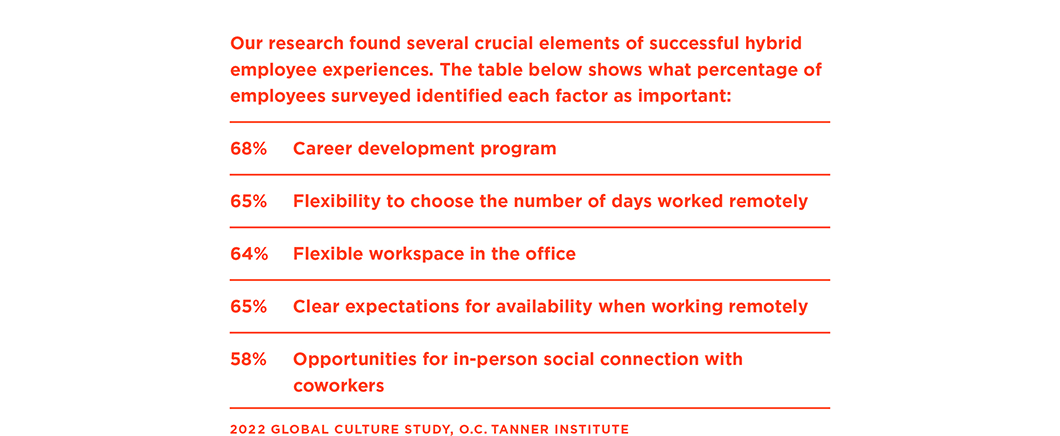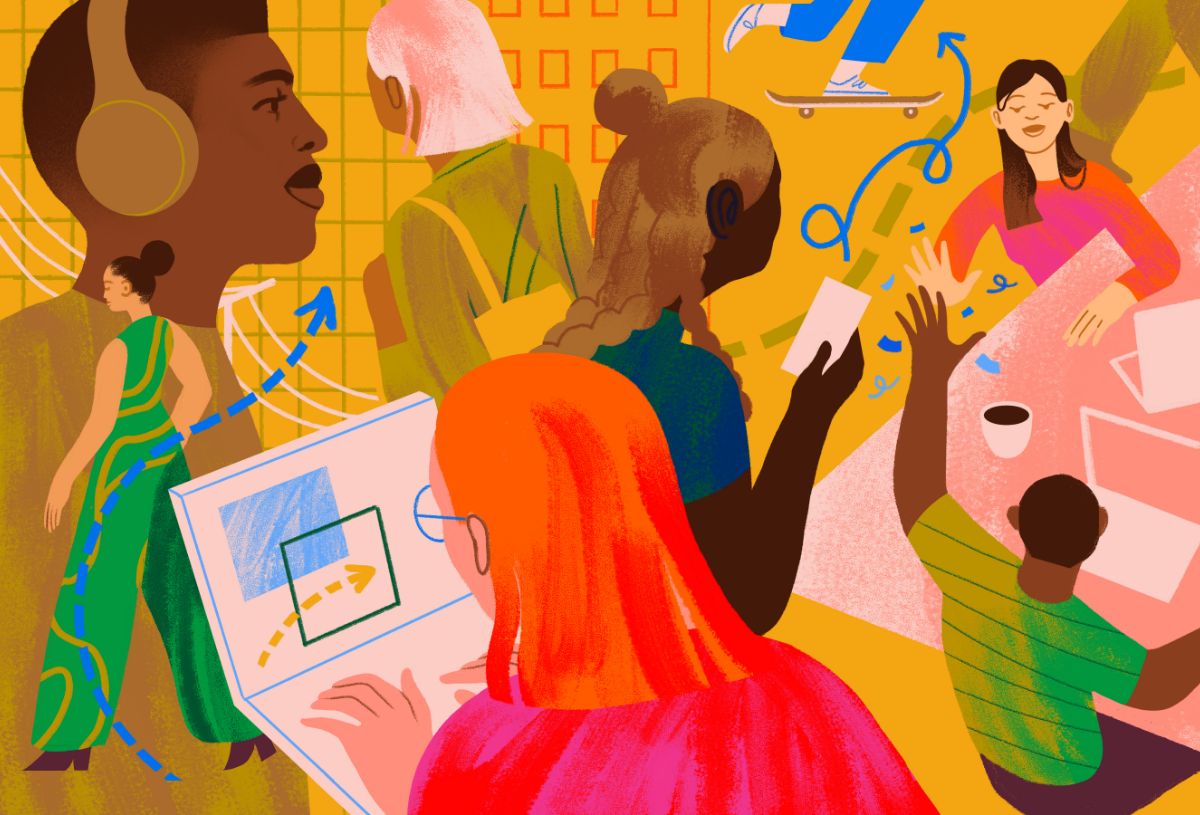Why Employees Leave—And 4 Ways Recognition Can Slow Resignation

Updated on
September 3, 2025
3
September
2025
Organisational shifts are affecting how (and where) employees work
Shifts in organisational priorities and work policies continue to affect the workplace. These shifts have contributed to a continuance of higher turnover and instability in the workplace. But there may be ways to counter these shifts with tools that can bring back more stability—including employee recognition.
As part of The State of Organisations report, McKinsey identified the 10 most significant shifts facing organisations today. These shifts address current issues like economic volatility, geopolitical instability, the post-pandemic workplace, and other organisational shifts that affect how and where people do their jobs.
Some of the shifts identified in the study include the balance of in-person and remote work, new rules for retaining talent, progress in DEI policies, and employee well-being/mental health.
O.C. Tanner’s Global Culture Report confirms that the fundamentals of work, the priorities of employees, and the role of leaders all continue to evolve, and this year’s report notes that the transformation is already underway.
How should leaders respond to these shifts in the workplace? And how can they provide employees with the benefits and work environment they desire as they continue to build attractive workplace cultures where people want to stay?
The truth is many employees aren’t looking for more pay and benefits or a better brand name. They are leaving for completely different careers that give them more control and flexibility over their lives.
Another McKinsey study finds that while employers think better pay and benefits will attract and keep their people, what employees really want from their companies is to feel valued, a sense of belonging, control over their careers, and flexibility and autonomy in their jobs.
“People are revising their attitudes both to work and at work. Organisations can respond by tailoring employee value propositions to individualized preferences in ways that can help close the gap between what today’s workers want and what companies need.”
–McKinsey
What are flexibility and autonomy in the workplace?
It’s much more than working from a coffee shop, refusing to come into the office, or only working a few hours a day. Flexibility and autonomy at work mean:
1) Flexibility in when, where, and how employees do their work
Research from the latest Global Culture Report explores how employers can provide flexibility in an equitable way that acknowledges limitations and balances them by focusing on empathy and connection. To be seen, valued, and trusted, every employee must have some level of flexibility at work. This flexibility includes five components.

Employees with little or no flexibility in their roles feel undervalued and more prone to burnout and exhaustion. Odds of burnout increase by 5x when employees are dissatisfied with their flexibility at work.
2) More control over their work and careers
Autonomy includes an increased sense of ownership and more say in the projects they work on, the type of work they do, and how that work gets done. It’s the freedom to make their own choices at work. When companies get this right, the results are profound:
When employees' psychological need for autonomy is satisfied, organisations see a:
- 228% increase in employee experience rating
- 459% increase in the incidence of great work
- 422% increase in engagement
- 249% increase in eNPS
Harvard Business Review reports that true flexibility at work is conditional upon employees’ ability to “exercise it in a way that best fits them. In other words, it’s conditional upon autonomy.” Flexibility and autonomy, according to the research, go hand in hand.
61% of employees want to decide when to come into the office and when to work from home.
“Flexibility is conditional upon [the employee’s] ability to exercise it in a way that best fits them. In other words, it’s conditional upon autonomy."
–Harvard Business Review
If companies want to attract talent, and help people want to stay, they must shift their view of employees and the role of work. Just as organisations learned to accommodate remote work and kids in the background of Zoom meetings during the pandemic, they must now adjust to accommodate employees’ need for even more flexibility and autonomy.

How employee recognition can help with retention
Employee recognition can help foster a sense of autonomy at work and keep employees connected in this new era of flexible work.
1) RECOGNITION HELPS REMOTE EMPLOYEES STAY CONNECTED.
Keeping people connected while working in a hybrid role or remotely is crucial. Employees who have strong connections at work have better experiences, do more great work, and are less likely to experience burnout. Just look at the impact of strong connections:

It takes more than Zoom calls to keep people connected. The best workplaces use frequent employee recognition to connect employees to purpose, accomplishment, and one another. Recognition connects employees to purpose by affirming how their great work contributes to and furthers the organisation’s mission. It celebrates employee accomplishments and connects them to the company’s success. And recognition builds connections between givers and receivers, helping to build strong team connections and ensuring that they feel seen and know they belong.


More recognition leads to more connection. Recognition for everyday efforts, above and beyond accomplishments, and career milestones leads to higher engagement, feelings of inclusion, and better wellbeing:

Heritage Bank uses recognition to build connection. They did so when their workforce had to transition to remote work at the beginning of the pandemic. The Bank used their Celebrate Great program, powered by Culture Cloud, to keep employees connected:
- The Board of Directors sent an eCard to all employees with words of encouragement when branch lobbies had to close temporarily.
- Managers continued to hold service award celebrations remotely.
- Leaders used the platform’s Wall of Fame to ensure employees’ great work was seen, liking and commenting on the recognition employees received.
- Celebrate Great was used to share stories of what employees are doing and how they’ve taken care of customers.
“No matter where you are, at the worksite or at home, you can send appreciation to your colleagues and stay connected through the platform. Without Celebrate Great. I don’t know how managers would be able to do that in an easy way.”
–Mike Nelson, Director of Talent Development, Heritage Bank
2) RECOGNITION INCREASES FEELINGS OF BELONGING.
Recognition, when done well, shows employees they are valued as an individual for their unique contributions and bringing their whole selves to work. It demonstrates that they are an integral part of and belong on the team and at your organisation.
Meaningful recognition builds belonging and inclusion by ensuring that all employees feel like they fit in the organisation, are appropriately utilised and valued, and are welcomed in every setting. No matter where employees are working from, even if they aren’t physically together, recognition can bridge the distance gaps and help them feel they are part of the team.
54% of employees who left their jobs in the past 6 months did not feel valued by their organisation and 51% lacked a sense of belonging.
When recognition is an integrated part of an organisation’s culture, employees are:
- 4x more likely to feel high inclusion
- 22% less likely to feel high exclusion
- 13x more likely to feel they belong at the organisation
And when companies celebrate successes together, employees are 20X more likely to feel connected and want to stay.
American Airlines has employees spread across the globe, on the ground and in the air. They wanted to help team members feel part of the company no matter what location they work from. So they launched Non-Stop Thanks, a program through the Culture Cloud platform, that empowers employees to recognise peers and create meaningful recognition experiences for everyone.
As a Senior Base Manager of Flight Service Base Operations, Claire Madden isn’t always able to see her team of flight attendants or the great work they regularly do on planes. So when she hears about something great they’ve done, she uses Non-Stop Thanks to easily send recognition and often recognises cross-functionally when someone from another team helps a team member of hers.
“We want to recognise when a crew or flight attendant does something extraordinary: helping someone with their children, returning a lost item, pushing a wheelchair to their next gate… the kind of ownership that has built the great brand that we have,” says Madden.
"At the end of the day, people want to be seen and heard. When you’re giving recognition, you’re seeing them as a person—how they bring their uniqueness to make our company better.”
–Ocean Nelson, Senior Coordinator, Recognition and Engagement, American Airlines

3) RECOGNITION HELPS WITH CAREER DEVELOPMENT.
In the new flexible workplace, companies need to have a robust strategy for career development. For hybrid employees, career development was the most crucial element of a successful employee experience.

Recognition showcases the great work and careers of all employees, not just those in the office. It highlights employee accomplishments and skills to others across the organisation, paving the way for opportunities to network, work on special projects, and develop skills. And it builds a sense of ownership, expertise, and autonomy. By recognising small wins and efforts along the way, leaders see an 83% increase in engagement and a 136% increase in employees feeling like a subject matter expert at their organisation.

4) RECOGNITION REINFORCES OWNERSHIP OF WORK AND BUILDS AUTONOMY.
It shows employees have taken the lead, innovated, and did something great on their own. Recognition calls out and rewards autonomous actions that lead to success.
Recognition increases the likelihood of autonomy satisfaction by 225%.
–Global Culture Report, O.C. Tanner Institute
Give employees autonomy and provide a flexible program so they can give recognition for whatever great work they see, from wherever they are. Empower them to own the recognition experience, without unnecessary approvals, and personalise each recognition moment for the recipient. Integrate recognition into your company culture so employees can easily recognise and be recognised for their work.
When recognition is an integrated part of an organisation’s culture, there is a:
- 173% increase in engagement
- 114% increase in sense of purpose
- 151% increase in feelings of success
GE Appliances uses Recognise YOU, powered by Culture Cloud, to personalise their employees’ career anniversary experience but also empower managers to recognise when they see great work without the need for HR involvement. They removed unnecessary approvals for recognition and let leaders create whatever personalised recognition experiences they want for their people. Leaders leverage manager dashboards to see how their teams are recognising one another.
This empowerment and autonomy has had an impact on retention:
- Likelihood of attrition decreased 73% when employees received at least one eCard a month
- Likelihood of attrition decreased 79% when they received at least one nomination a month
- Overall risk of attrition decreased 58% with any type of recognition in the prior month
“Managers are asking how they can use the tool more effectively and start their own campaigns for recognition.”
–Meredith Yu, Compensation Analyst, GE Appliances
Recognising and appreciating great work can meet employee needs for flexibility and autonomy in the new workplace. It creates a thriving culture so employees, no matter where they are working from, will do great work and stay. Learn how Culture Cloud can help.
Organisational shifts are affecting how (and where) employees work
Shifts in organisational priorities and work policies continue to affect the workplace. These shifts have contributed to a continuance of higher turnover and instability in the workplace. But there may be ways to counter these shifts with tools that can bring back more stability—including employee recognition.
As part of The State of Organisations report, McKinsey identified the 10 most significant shifts facing organisations today. These shifts address current issues like economic volatility, geopolitical instability, the post-pandemic workplace, and other organisational shifts that affect how and where people do their jobs.
Some of the shifts identified in the study include the balance of in-person and remote work, new rules for retaining talent, progress in DEI policies, and employee well-being/mental health.
O.C. Tanner’s Global Culture Report confirms that the fundamentals of work, the priorities of employees, and the role of leaders all continue to evolve, and this year’s report notes that the transformation is already underway.
How should leaders respond to these shifts in the workplace? And how can they provide employees with the benefits and work environment they desire as they continue to build attractive workplace cultures where people want to stay?
The truth is many employees aren’t looking for more pay and benefits or a better brand name. They are leaving for completely different careers that give them more control and flexibility over their lives.
Another McKinsey study finds that while employers think better pay and benefits will attract and keep their people, what employees really want from their companies is to feel valued, a sense of belonging, control over their careers, and flexibility and autonomy in their jobs.
“People are revising their attitudes both to work and at work. Organisations can respond by tailoring employee value propositions to individualized preferences in ways that can help close the gap between what today’s workers want and what companies need.”
–McKinsey
What are flexibility and autonomy in the workplace?
It’s much more than working from a coffee shop, refusing to come into the office, or only working a few hours a day. Flexibility and autonomy at work mean:
1) Flexibility in when, where, and how employees do their work
Research from the latest Global Culture Report explores how employers can provide flexibility in an equitable way that acknowledges limitations and balances them by focusing on empathy and connection. To be seen, valued, and trusted, every employee must have some level of flexibility at work. This flexibility includes five components.

Employees with little or no flexibility in their roles feel undervalued and more prone to burnout and exhaustion. Odds of burnout increase by 5x when employees are dissatisfied with their flexibility at work.
2) More control over their work and careers
Autonomy includes an increased sense of ownership and more say in the projects they work on, the type of work they do, and how that work gets done. It’s the freedom to make their own choices at work. When companies get this right, the results are profound:
When employees' psychological need for autonomy is satisfied, organisations see a:
- 228% increase in employee experience rating
- 459% increase in the incidence of great work
- 422% increase in engagement
- 249% increase in eNPS
Harvard Business Review reports that true flexibility at work is conditional upon employees’ ability to “exercise it in a way that best fits them. In other words, it’s conditional upon autonomy.” Flexibility and autonomy, according to the research, go hand in hand.
61% of employees want to decide when to come into the office and when to work from home.
“Flexibility is conditional upon [the employee’s] ability to exercise it in a way that best fits them. In other words, it’s conditional upon autonomy."
–Harvard Business Review
If companies want to attract talent, and help people want to stay, they must shift their view of employees and the role of work. Just as organisations learned to accommodate remote work and kids in the background of Zoom meetings during the pandemic, they must now adjust to accommodate employees’ need for even more flexibility and autonomy.

How employee recognition can help with retention
Employee recognition can help foster a sense of autonomy at work and keep employees connected in this new era of flexible work.
1) RECOGNITION HELPS REMOTE EMPLOYEES STAY CONNECTED.
Keeping people connected while working in a hybrid role or remotely is crucial. Employees who have strong connections at work have better experiences, do more great work, and are less likely to experience burnout. Just look at the impact of strong connections:

It takes more than Zoom calls to keep people connected. The best workplaces use frequent employee recognition to connect employees to purpose, accomplishment, and one another. Recognition connects employees to purpose by affirming how their great work contributes to and furthers the organisation’s mission. It celebrates employee accomplishments and connects them to the company’s success. And recognition builds connections between givers and receivers, helping to build strong team connections and ensuring that they feel seen and know they belong.


More recognition leads to more connection. Recognition for everyday efforts, above and beyond accomplishments, and career milestones leads to higher engagement, feelings of inclusion, and better wellbeing:

Heritage Bank uses recognition to build connection. They did so when their workforce had to transition to remote work at the beginning of the pandemic. The Bank used their Celebrate Great program, powered by Culture Cloud, to keep employees connected:
- The Board of Directors sent an eCard to all employees with words of encouragement when branch lobbies had to close temporarily.
- Managers continued to hold service award celebrations remotely.
- Leaders used the platform’s Wall of Fame to ensure employees’ great work was seen, liking and commenting on the recognition employees received.
- Celebrate Great was used to share stories of what employees are doing and how they’ve taken care of customers.
“No matter where you are, at the worksite or at home, you can send appreciation to your colleagues and stay connected through the platform. Without Celebrate Great. I don’t know how managers would be able to do that in an easy way.”
–Mike Nelson, Director of Talent Development, Heritage Bank
2) RECOGNITION INCREASES FEELINGS OF BELONGING.
Recognition, when done well, shows employees they are valued as an individual for their unique contributions and bringing their whole selves to work. It demonstrates that they are an integral part of and belong on the team and at your organisation.
Meaningful recognition builds belonging and inclusion by ensuring that all employees feel like they fit in the organisation, are appropriately utilised and valued, and are welcomed in every setting. No matter where employees are working from, even if they aren’t physically together, recognition can bridge the distance gaps and help them feel they are part of the team.
54% of employees who left their jobs in the past 6 months did not feel valued by their organisation and 51% lacked a sense of belonging.
When recognition is an integrated part of an organisation’s culture, employees are:
- 4x more likely to feel high inclusion
- 22% less likely to feel high exclusion
- 13x more likely to feel they belong at the organisation
And when companies celebrate successes together, employees are 20X more likely to feel connected and want to stay.
American Airlines has employees spread across the globe, on the ground and in the air. They wanted to help team members feel part of the company no matter what location they work from. So they launched Non-Stop Thanks, a program through the Culture Cloud platform, that empowers employees to recognise peers and create meaningful recognition experiences for everyone.
As a Senior Base Manager of Flight Service Base Operations, Claire Madden isn’t always able to see her team of flight attendants or the great work they regularly do on planes. So when she hears about something great they’ve done, she uses Non-Stop Thanks to easily send recognition and often recognises cross-functionally when someone from another team helps a team member of hers.
“We want to recognise when a crew or flight attendant does something extraordinary: helping someone with their children, returning a lost item, pushing a wheelchair to their next gate… the kind of ownership that has built the great brand that we have,” says Madden.
"At the end of the day, people want to be seen and heard. When you’re giving recognition, you’re seeing them as a person—how they bring their uniqueness to make our company better.”
–Ocean Nelson, Senior Coordinator, Recognition and Engagement, American Airlines

3) RECOGNITION HELPS WITH CAREER DEVELOPMENT.
In the new flexible workplace, companies need to have a robust strategy for career development. For hybrid employees, career development was the most crucial element of a successful employee experience.

Recognition showcases the great work and careers of all employees, not just those in the office. It highlights employee accomplishments and skills to others across the organisation, paving the way for opportunities to network, work on special projects, and develop skills. And it builds a sense of ownership, expertise, and autonomy. By recognising small wins and efforts along the way, leaders see an 83% increase in engagement and a 136% increase in employees feeling like a subject matter expert at their organisation.

4) RECOGNITION REINFORCES OWNERSHIP OF WORK AND BUILDS AUTONOMY.
It shows employees have taken the lead, innovated, and did something great on their own. Recognition calls out and rewards autonomous actions that lead to success.
Recognition increases the likelihood of autonomy satisfaction by 225%.
–Global Culture Report, O.C. Tanner Institute
Give employees autonomy and provide a flexible program so they can give recognition for whatever great work they see, from wherever they are. Empower them to own the recognition experience, without unnecessary approvals, and personalise each recognition moment for the recipient. Integrate recognition into your company culture so employees can easily recognise and be recognised for their work.
When recognition is an integrated part of an organisation’s culture, there is a:
- 173% increase in engagement
- 114% increase in sense of purpose
- 151% increase in feelings of success
GE Appliances uses Recognise YOU, powered by Culture Cloud, to personalise their employees’ career anniversary experience but also empower managers to recognise when they see great work without the need for HR involvement. They removed unnecessary approvals for recognition and let leaders create whatever personalised recognition experiences they want for their people. Leaders leverage manager dashboards to see how their teams are recognising one another.
This empowerment and autonomy has had an impact on retention:
- Likelihood of attrition decreased 73% when employees received at least one eCard a month
- Likelihood of attrition decreased 79% when they received at least one nomination a month
- Overall risk of attrition decreased 58% with any type of recognition in the prior month
“Managers are asking how they can use the tool more effectively and start their own campaigns for recognition.”
–Meredith Yu, Compensation Analyst, GE Appliances
Recognising and appreciating great work can meet employee needs for flexibility and autonomy in the new workplace. It creates a thriving culture so employees, no matter where they are working from, will do great work and stay. Learn how Culture Cloud can help.



